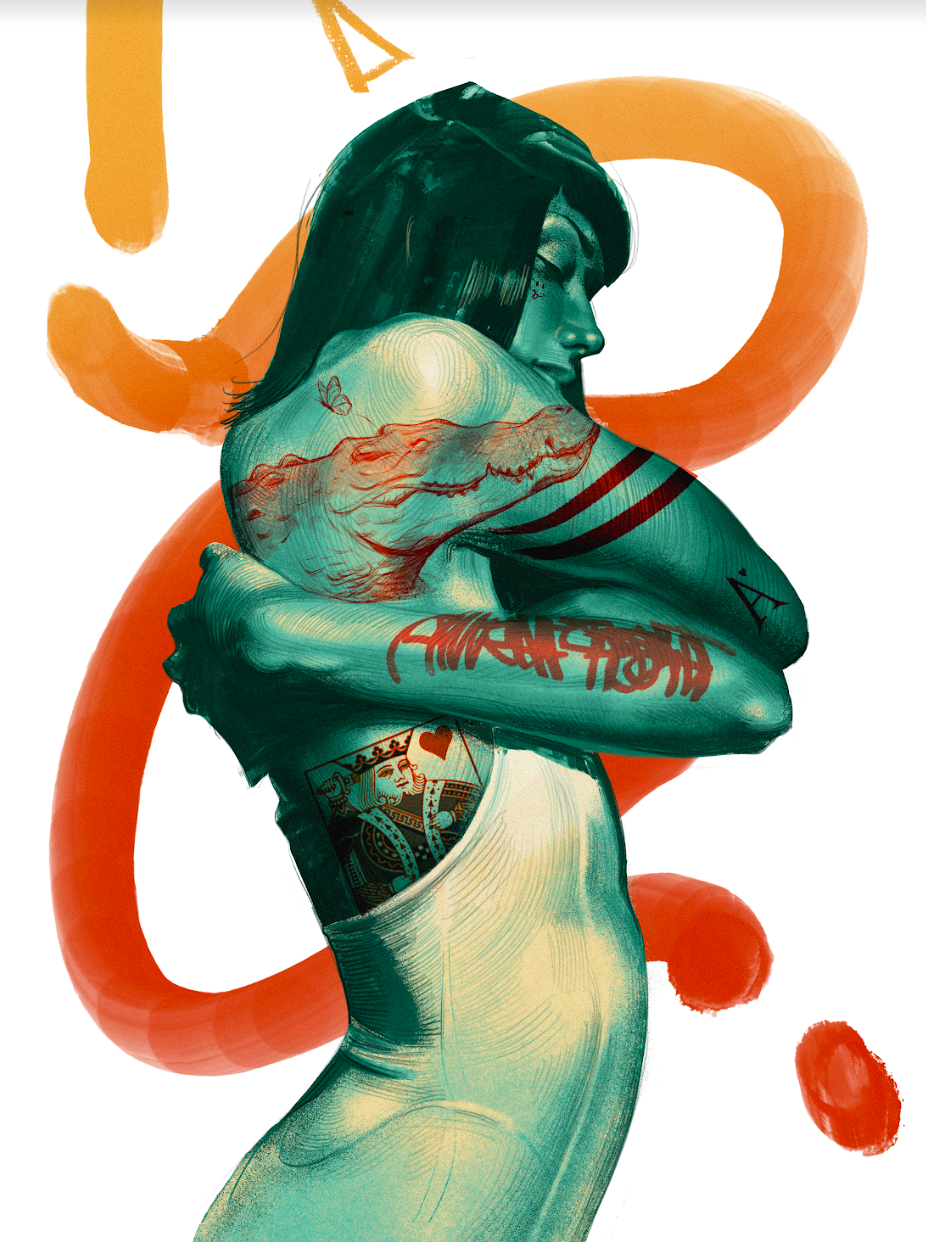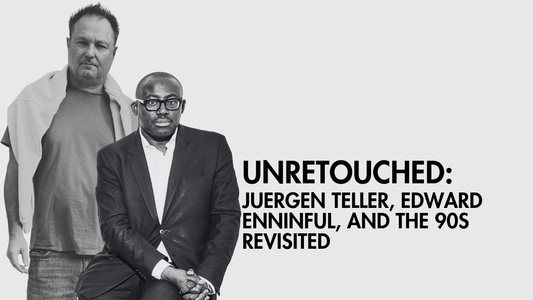
'Gritty Textures and Traditional Elements' with Alvaro Escobar
Share
What initially drew you to portraiture, and how has your approach to capturing the essence of a person evolved over time?
Portraiture has always captivated me because I find it to be one of the most challenging forms of visual art. I have a short attention span with most projects, but portraiture keeps me engaged in a way that landscapes or architectural art do not. My approach has evolved into capturing my own subconscious thoughts and moods, using the subject as a vessel. I choose or create references that align with my personal state of mind at the time.
What is your favourite medium to work with, and how does it affect the way you bring your subjects to life?
These days, I’m all about digital because it’s so versatile. I can pick brushes that feel like traditional tools, but with way more colour options and none of the hassle of mixing or dealing with fumes from oils or sprays. Plus, it’s super easy to play around with typography and cool digital effects.

Who or what are your biggest sources of inspiration when it comes to creating portraits? Do you look to the past, contemporary art, pop culture or something entirely different?
My biggest sources of inspiration come from a mix of past and contemporary artists, as well as pop culture. I’m a fan of Egon Schiele’s unique take on the human form, and I also admire the storytelling and iconic styles of Norman Rockwell and J.C. Leyendecker. Contemporary artists like James Jean, Phil Hale, and Eliza also influence my work. I’m into old anime like Akira and Cowboy Bebop, and I enjoy the films of Quentin Tarantino, Ridley Scott, and Denis Villeneuve.

How do you capture the personality or emotion of your subject in a single image? Are there specific techniques or details you focus on?
I capture emotion through my use of shadow, lighting, and texture. I think gritty textures and traditional elements give my images a moody look, and I like to incorporate typography and graffiti to add character.

Do you prefer working from live models, photos, or a mix of both when illustrating portraits, and how does your process differ in each case?
For finished pieces, I prefer photo references because I find it hard to complete a piece with someone sitting in front of me. But for practice, I think drawing from live models is the best way to learn and improve. It feels more spontaneous and full of personality. Working from photos also lets me tweak the reference in ways I can’t with a live model.
What are some common challenges you face when creating portraits, and how do you overcome them to maintain a high level of detail and expression?
I often struggle with being too much of a perfectionist, especially with accuracy and proportions. I try to focus on likeness rather than making everything perfectly accurate. Sometimes I spend too long trying to get things just right. To maintain detail and expression, I focus on the overall mood and feeling I’m trying to convey, rather than having a set plan for the final look.

How has social media and the digital age influenced your work, and what impact do you think it’s had on the field of illustration overall?
Social media has changed the way I work by giving me access to an infinite pool of inspiration that I can draw from, remix, and make my own. It’s also influenced my work ethic; the support I’ve received on platforms like Instagram has motivated me to keep creating in my free time, share personal work, and provide content that others might find helpful in their own artistic journeys.

What advice would you give to aspiring illustrators who are just starting to explore portrait illustration? Any tips for honing their skills?
One thing that really helped me was finding online resources to develop my skills in a traditional way. Sometimes a structured education can really boost your growth, even if you’re self-taught. Also, drawing from life, whenever possible, is crucial. There’s just no substitute for the growth that comes from observing and drawing from real life.
What role does travel and experiencing different cultures play in shaping your artistic ideas?
I haven’t traveled much outside the East Coast, except for a few trips to El Salvador, where my family’s from. However, growing up in Washington, D.C., a city rich in cultural diversity, has exposed me to a wide range of backgrounds and ideologies. This environment has given me an open mind to different ideas and experiences, which likely influences my art, even if it’s more subconscious.

Are there any brands or designers whose aesthetics resonate with you and inspire your artistic style?
One brand that resonates with me is Adult Swim. Their unconventional, surreal, and often dark humor, along with their edgy and satirical content, really connects with my generation. The way they curate their shows has definitely influenced my aesthetic sensibilities. I’m also a fan of Hideo Kojima and Kojima Productions. Kojima’s creative storytelling and unique approach to game design have always caught my eye.
See more from Alvaro:
Social media across all platforms: @alvaroescbr
Website: alvaroescobarart.com
Interview by Diane Morgan



